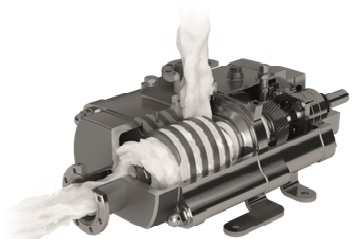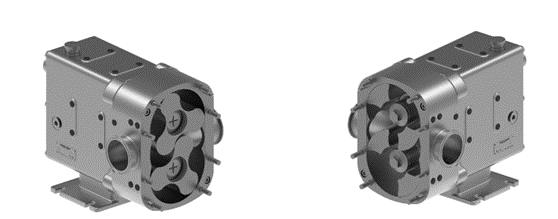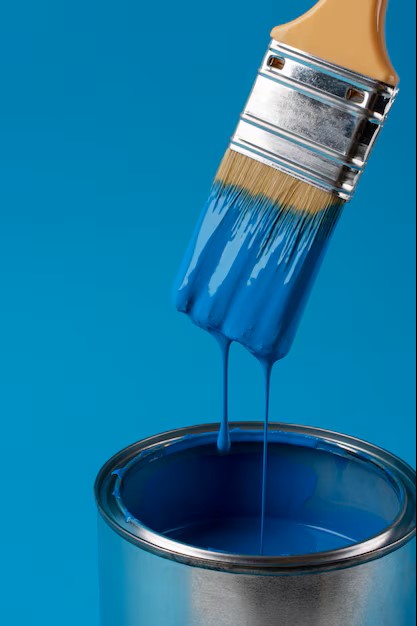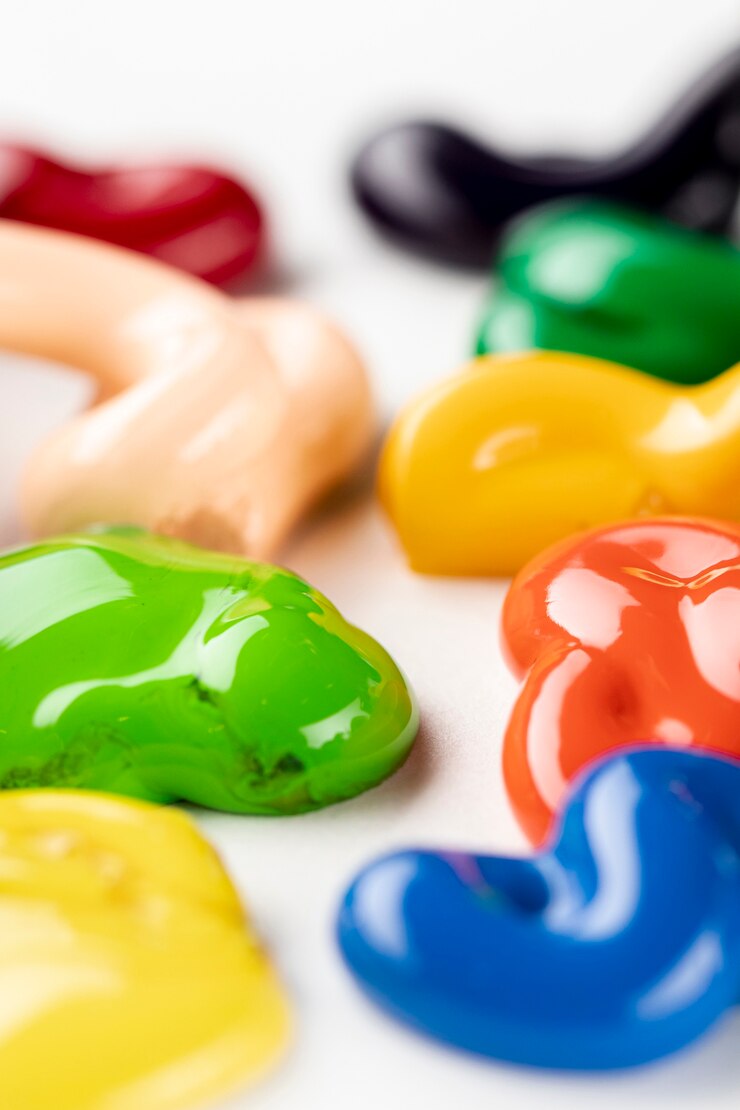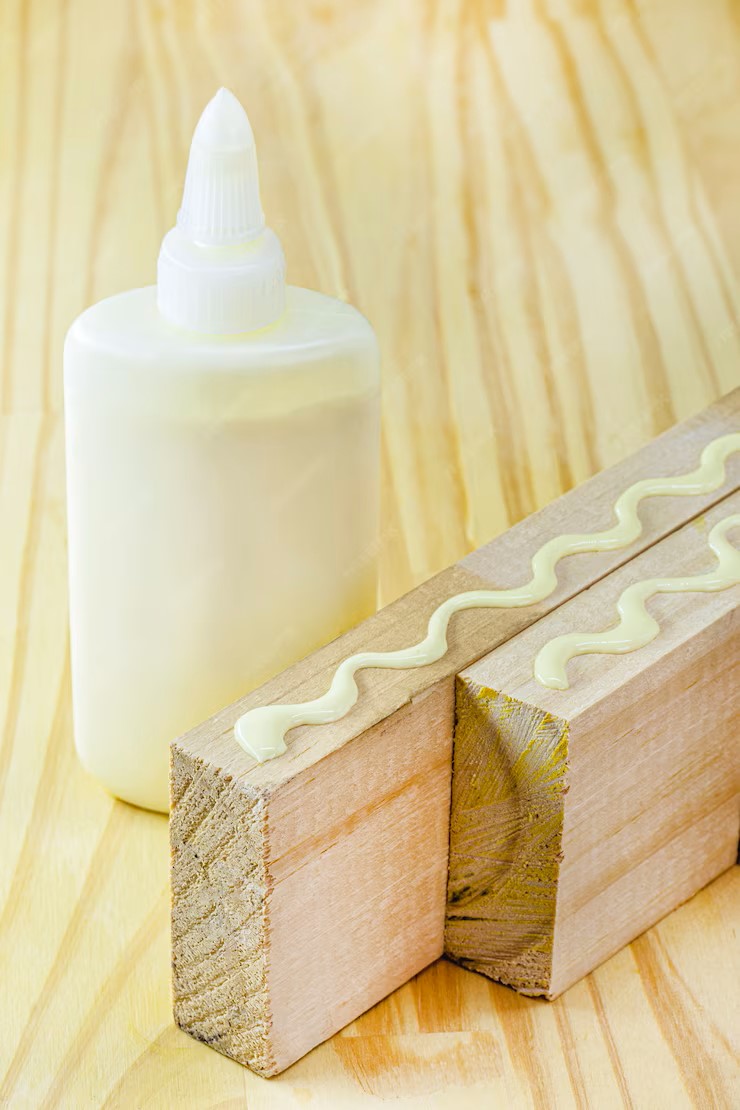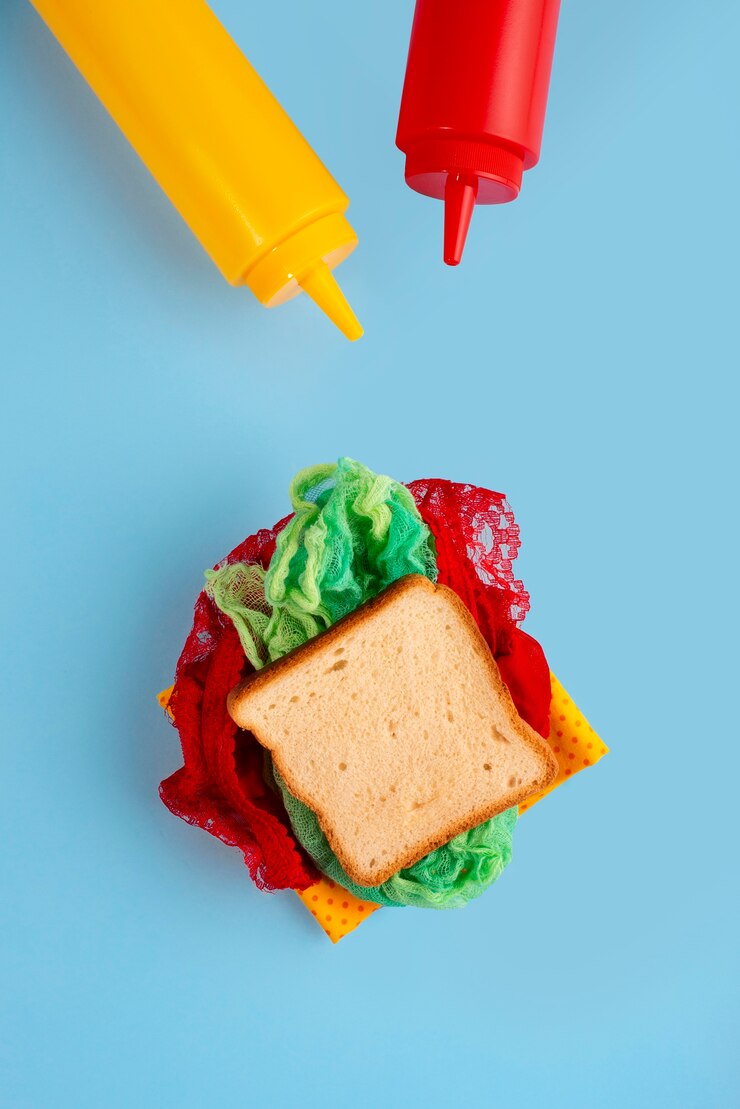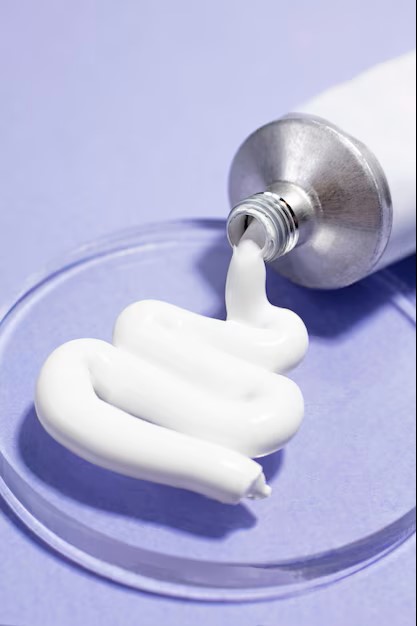Useful Information on Pumps for Shear-Sensitive Fluids
What is Shear?
When a fluid is pumped through a pipe, its velocity will be higher towards the centre of the pipe cross-section. Right at the pipe wall, the fluid may even be stationary. Shear is a measure of the relative motion between adjacent layers of a moving fluid.
What is a Shear-Sensitive Fluid?
With simple liquids, such as water, viscosity is a constant value, unaffected by agitation (by, for example, pumping or stirring - conditions of ‘shear stress’). Fluids of this type are called Newtonian fluids (because they obey Newton’s Law of Viscosity). However, many complex fluids such as suspensions, slurries, pastes and food stuffs may show changes in viscosity with stirring or pumping. These changes can also be time dependent. Fluids of this type are termed ‘shear-sensitive’.
Shear-sensitive fluids can behave very differently when pumped. Some may require agitation to get them to the ideal viscosity for transfer or dosing. Others can be temporarily or irrevocably damaged by shear action causing changes such as separation or setting. Examples of shear-sensitive liquids are:
• Paints and pigments
• Polymers
• Latex Solutions
• Mayonnaise & ketchup
• Coatings
• Slurries
• Creams & Shampoo
Are there different types of shear-sensitive fluids?
There are several types of shear-sensitive fluids:
| Fluid Type | Viscosity change with pumping | Examples |
| Shear-thickening | Increases but settles back to original viscosity when pumping stops. | Suspensions of fine particles such as cement, sand, lime or starch. |
| Rheopectic | Increases and continues to increase over time. | Printer inks, lubricants, and certain suspensions of gypsum. |
| Thixotropic | Decreases. May take a considerable time to settle back to original viscosity. | Glues, non-drip paint, greases, cellulose compounds, soaps, starches, gelatinous food stuffs, and tar. |
| Pseudoplastic | Decreases but immediately returns to original state when static again. | Rubber, latex, mayonnaise. |
| Irreversible | Does not resume original viscosity after agitation. | Cheese, yogurt, and marmalade. |
|
Visco-elastic: Formed of viscous and elastic components, generally a solvent and a polymer. |
Undergoes both elastic and viscous deformations when pumped. There may be some reversal of the elastic deformation. | Asphalt, liquid nylon, rubber, polymer solutions, paints, DNA suspensions, and some biological fluids. |
| Plastic | Requires a minimum shear stress (called yield stress) to initiate flow. The apparent viscosity decreases from an infinitely high value as the flow increases. | Toothpaste, ointments, grease, margarine, paper pulp, ink and emulsions. |
What types of pumps are used for shear-sensitive fluids?
In general, pumps with both a slow, gentle pumping action and with large spaces between the internal moving parts are preferred.
As a fluid enters a pump’s suction piping, it begins to shear as the fluid traveling through the middle of the pipe moves faster than that at the pipe walls. Within the pump, any fast, rotating elements will tend to impart shear between the rotors and the stationary casing (for this reason, centrifugal pumps are not suitable). Shear increases wherever there is a difference in velocity across the moving fluid and the greater the difference, the higher the shear. Any pump which has counteracting internal parts will impart higher shear and require low speed operation.
Various types of positive displacement pumps can be used:
Twin screw pumps
A twin screw pump comprises of two, parallel, intermeshed but non-contacting screws. With the synchronised rotation of the two screws, cavities are created along the pump’s axis and these allow the transfer of the pumped medium from suction to discharge in a controlled, non-pulsating flow. The axial, rather than radial, pumping action and the non-contacting parts ensures reduced agitation during transfer.
Twin screw pumps are capable of handling most fluids, especially those with high viscosities or containing ‘soft’ solids such as sauces or ointments. They are used in refineries, mining, semiconductor and chemical industries, and waste water treatment. In food, beverage, and pharmaceutical industries, twin screw pumps are particularly suitable for hygienic applications where cleanliness and sanitation are important.
Cutaway view of Bornemann Hygienic Twin Screw pump SLH-5G
Lobe pumps and circumferential piston pumps
These pumps are similar in design, with fully metallic construction and twin non-contacting counteracting lobes or rotors. This principle gives self-priming capability when wetted, and the large clearances and gentle action provided by the design of the rotors and rotorcase, along with low rotational speeds, makes them suitable for many shear-sensitive liquids and slurries. Circumferential piston pumps are preferred for handling entrained solids. Rotors are available in different designs to ensure excellent performance with a wide variety of temperatures (typically up to 150 °C continuous) and products. Ports can be arranged horizontally or vertically to suit different installations and to help improve suction conditions and flow presentation to the pump, which is particularly important with shear-sensitive fluids.
Viking’s Revolution® Series offers both rotary lobe (left) and circumferential piston rotor (right) configurations.
Diaphragm pumps
A diaphragm pump consists of one or more pumping chambers alternately filled and discharged by the movement of a flexible diaphragm with check valves on the inlet and outlet. The cyclic action of a diaphragm pump creates pulses in the discharge. This can be substantially reduced by employing multiple diaphragms operated in sequence, such as the range offer by Wanner Hydra-Cell. Multiple diaphragms in a single pump head also helps minimize tangential stress.
Diaphragm pumps have no rotating elements in contact with the pumped liquid and no tight internal tolerances. They impose minimal tangential stress to cause shear. The open area of each valve is large, relative to the volume of liquid being pumped by each diaphragm, so shear stress is minimised.
Extensive customer testing on liquids such as polymers, algae solutions, food oils and milk from 50 to 3,500 cP, has shown that the Hydra-Cell's pumping action achieves low shear, especially in high pressure applications, testing up to 200 bar.
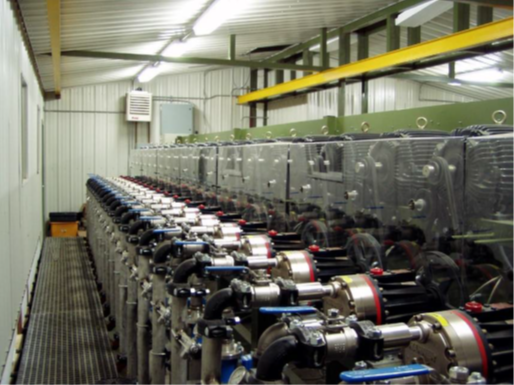
Hydra-Cell diaphragm pumps used for polymer injection in Enhanced Oil Recovery
Other suitable technologies
Progressive cavity pumps
These pumps use a helical screw rotating eccentrically within a rubber sheath called a stator. The combined action of the helical screw and its contact with the flexible stator creates both a seal preventing slippage and a number of cavities to produce a low pulsation pumping action. This type of pump is commonly used for high-viscosity fluids and sludges containing abrasive solids. Stator wear and slippage can be a problem and, compared with other pump technologies, maximum flow rates may be lower.
Internal gear pumps
Gear pumps can also be used with shear-sensitive fluids especially when combined with gear reducers to lower the pump speed. This type of pump is not suitable for abrasive fluids (due to the close tolerances of the gears), highly viscous media or for high pressure applications. Viking Pump offers an extensive range of internal gear pumps suitable for dealing with shear-sensitive fluids.
Peristaltic pumps
Peristaltic pumps use a flexible tube and rollers to transport the fluid. The rollers squeeze the tube, creating a gentle pulsing action that minimizes shear forces. There are no internal moving parts and no contact between the fluid and the pump's other components. The throughput and pressures that can be generated are lower than in other pump technologies. Tubing wear and the pulsating flow may also be a problem in some applications.
Vane pumps
A vane pump consists of multiple vanes extending from radial slots in a rotating cylindrical rotor. This is eccentrically located in the pump casing. The vanes maintain a close seal against the casing wall. During a rotation cycle, the volume between adjacent vanes changes because of the eccentric mounting position, creating suction and drawing in fluid at the pump inlet. The relatively large cavities between the vanes and the casing wall provide a gentle, low shear action. Vane pumps are not suitable for high viscosity liquids and are prone to damaging wear when used with feeds containing abrasives.
Rotary disc pumps
This type of pump features a cylinder and pumping element mounted on an eccentric shaft. As the eccentric shaft rotates, cavities are formed within the cylinder, drawing fluid into the pumping chamber at the suction side. Fluid is transported axially to the discharge at a regular flow rate. The low contact speed between moving and static parts results in reduced shear.
So which pump is best for shear-sensitive fluids?
This is a commonly asked question with no easy answer.
Even pumps regarded as being low shear pumps have some internal contact between the pumping element and the casing. However, very little of the liquid is actually being sheared. Most is carried through in the large cavities between the lobes, vanes, gear teeth or diaphragms. Only a small percentage along the outer edge of the pumping elements is in contact with the casing experiencing the maximum shear rate. In addition, speed is key. It’s not uncommon to see rotary positive displacement pumps turning at speeds below 100 RPM for extremely shear-sensitive liquids like latex solutions.
Experience will often dictate pump selection. A water treatment plant may use lobe pumps or progressive cavity pumps to dose shear-sensitive polymers whereas a polymer manufacturer uses internal gear pumps for the same liquid. One paper mill may use lobe pumps for their paper coatings while another uses internal gear pumps. Each is convinced that the other doesn’t know what they’re doing! The short answer is that they’re both right. Running positive displacement pumps at low speeds and utilising application knowledge from the pump representative and liquid manufacturer is the surest way to select a pump for handling a shear-sensitive fluid.
Thanks to www.pumpschool.com for some of this content

